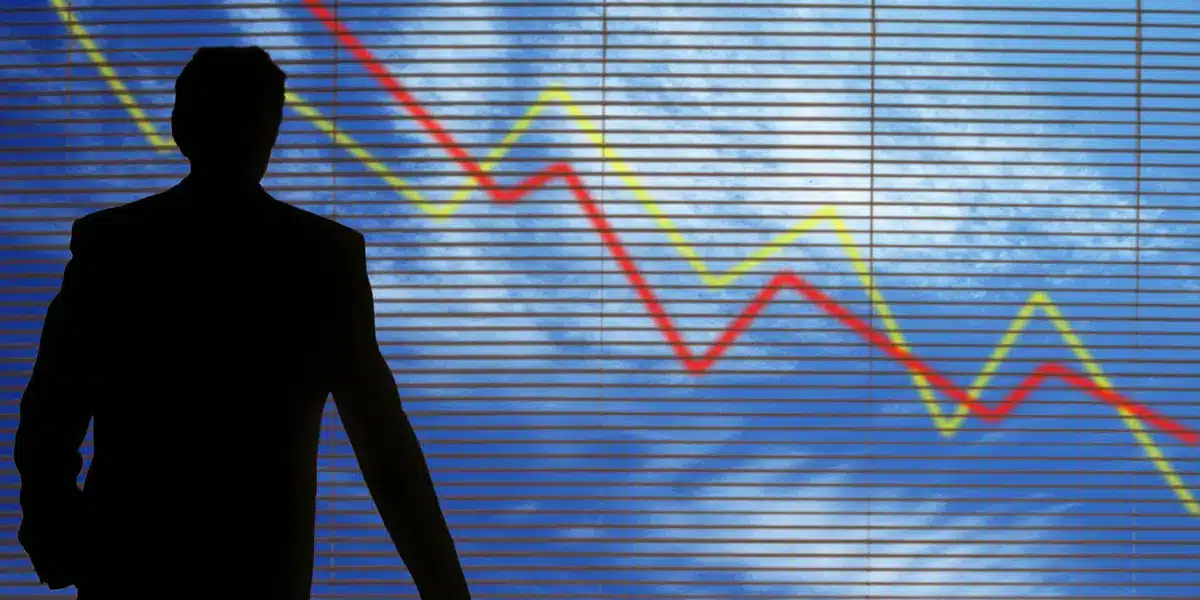Are We Facing a US Recession? Answering 5 Essential Questions

The U.S. economy is showing signs of potential recession, raising concerns about global economic stability. As the U.S. grapples with the effects of tariffs and slowing growth, countries like India, which are closely linked to both the U.S. and China, may also experience a slowdown. Economists and financial experts are weighing in on the likelihood of a recession and its implications for both the U.S. and the global economy.
Indicators of a Possible U.S. Recession
Several economic indicators suggest that the U.S. may be on the brink of a recession. The Conference Board’s Leading Economic Index (LEI) has declined in 15 of the past 18 months, indicating a significant slowdown in growth. While a full recession is not yet the board’s base case, the warning signs are evident. A recent poll by Reuters economists estimated a 45% probability of a recession within the next year, the highest since December 2023. Factors contributing to this outlook include tariffs that are projected to reduce GDP growth by 0.8 percentage points in 2025, alongside declining business sentiment and capital expenditure plans.
Mark Zandi from Moody’s Analytics has also placed the odds of a recession at 40% by the end of 2025, citing tariffs and tight credit standards as key issues. Bloomberg Opinion’s John Authers warns of the increasing risk of policy mistakes reminiscent of the 2008 financial crisis. He highlights the prolonged decline in the LEI and the impact of tariffs on supply chains. Ray Dalio, founder of Bridgewater Associates, has stated that the U.S. is “very close to a recession,” warning that mishandling tariffs could lead to more severe economic consequences.
Historical Context of U.S. Recessions
The U.S. has experienced several recessions since 2000, each with distinct characteristics and impacts. The dot-com recession in 2001 lasted eight months, with a peak unemployment rate of 5.7%. The Great Recession, which began in December 2007 and lasted 18 months, saw a significant contraction in GDP of 4.0% and unemployment peaking at 10%. The COVID-19 recession in early 2020 was notably brief, lasting only two months, but it resulted in a staggering GDP decline of 19.2% in the second quarter and an unemployment rate that soared to 14.7%.
Understanding these historical patterns is crucial for anticipating the potential impacts of a new recession. Each recession has had varying effects on employment, consumer confidence, and overall economic health, shaping the responses of policymakers and businesses alike.
Global Implications of a U.S. Recession
A recession in the U.S. can have far-reaching effects on the global economy, particularly when it coincides with other systemic financial shocks or external events. The International Monetary Fund (IMF) has ruled out the possibility of a global recession at this time. Historical data shows that the 2001 U.S. recession did not trigger a global downturn, as world GDP still grew by 2.5%, although trade growth suffered. Conversely, the 2007-2009 recession marked the first post-war global contraction, with world GDP declining by approximately 1.3% in 2009. The COVID-19 pandemic led to a sharp global GDP decline of around 3%, the most significant drop since 1945.
The interconnectedness of global markets means that economic downturns in the U.S. can lead to reduced demand for imports, affecting countries reliant on U.S. trade. However, the extent of the impact varies based on the nature of the recession and the economic conditions of other countries.
Comparing Recessions in the U.S., China, and India
Recessions in India and China differ significantly from those in the U.S. The primary shocks in the U.S. often stem from financial cycles and consumer credit issues, while India faces supply-side shocks and external capital flow challenges. In India, informal employment constitutes a large portion of the workforce, limiting the reach of social security measures during economic downturns.
The U.S. typically experiences a sharp rise in unemployment during recessions, but benefits help cushion the financial blow for many workers. In contrast, job losses in India often push workers back into agriculture or informal sectors, exacerbating underemployment rather than simply increasing the unemployment rate. Additionally, while a U.S. recession can tighten global financial conditions, an Indian recession primarily impacts regional trade and commodity demand, with limited financial contagion due to capital controls.
As the U.S. economy navigates these uncertain waters, the implications for both domestic and international markets remain a critical area of focus for economists and policymakers alike.
Observer Voice is the one stop site for National, International news, Sports, Editor’s Choice, Art/culture contents, Quotes and much more. We also cover historical contents. Historical contents includes World History, Indian History, and what happened today. The website also covers Entertainment across the India and World.

